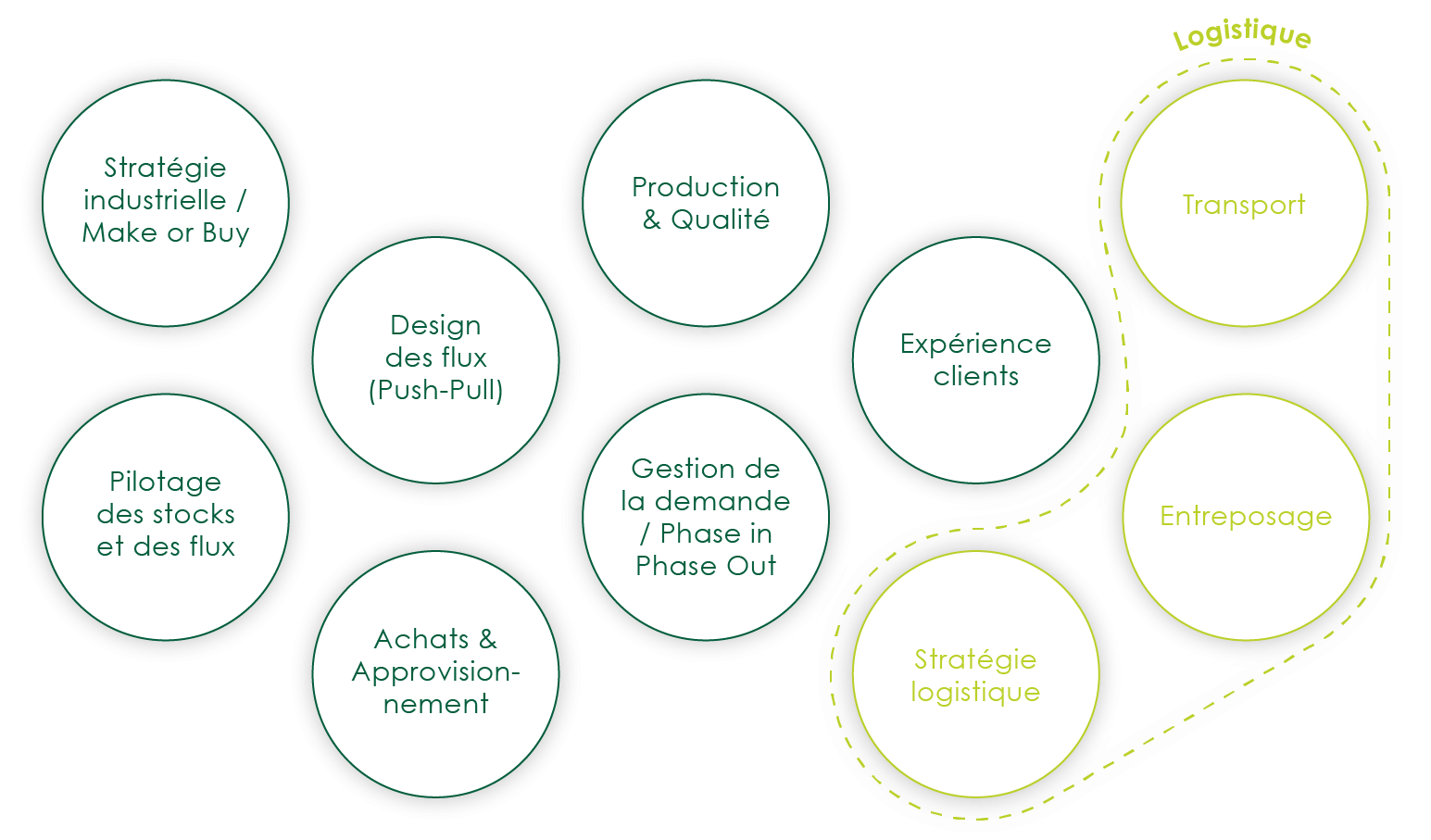Supply Chain,
a common definition across the globe

The Supply Chain's mission is to manage end-to-end flows, product flows, information flows, physical infrastructures and human organizations, from suppliers to the final customer.


It covers a wide range of activities, which account for ~ 60% to 80% of product costs.
In the course of our history, our members first evolved in logistics services to extend to all those of the Supply Chain. In 1982, this English term appeared to the greatest number of people thanks to a paper in the Financial Times. From then on, many people will look for a French translation of the term Supply Chain. However, this would be to reduce it to its sole dimension of supply. The definition of Supply Chain is more global, transversal and therefore extremely strategic .
There is no difference between logistics and supply chain, but rather an interweaving of the supply chain within the latter. Distribution logistics is the tip of the iceberg with its logistics platforms, warehouses and transport. Internal and external flowsgo beyond the management of raw materials and finished products to include: work-in-progress, consumables, production operators, data management, etc. With such a wide range of activities, Supply Chain Management must answer key questions for the competitiveness of companies.






Supply Chain Management is about steering, organizing, coordinating flows and people or optimizing processes: many professions at the heart of the company's business.
Their ambition is not only to reduce costs, but to arbitrate between largely conflicting objectives.

of employees, which represents 10% of employment in the market sector*.
tonne-kilometres of goods transported*(in tonnes)
ofm2 of warehouses of more than 5000m2*
of French GDP*

positions to be filled each year
for the next 5 years of which :
in operational positions (drivers, warehouse staff, etc.)
in management positions
You will perform a self-assessment of your Supply Chain maturity.
This self-diagnosis, created by the LAB ETI/PME of France Supply Chain from a selection of 22 questions of the Reference frame of Excellence of France Supply Chain, has for only objective to provide an evaluation of the degree of maturity of the fundamentals of your Supply Chain and to position you compared to the best practices of the field.
The data provided are for the exclusive use of France Supply Chain to feed a database allowing each respondent company to compare itself against anonymized averages.
In order to allow you to make this comparison, the filling of this diagnosis requires the collection of your contact information.
You will perform a self-assessment of your Supply Chain maturity.
This self-diagnosis, created by the LAB ETI/PME of France Supply Chain from a selection of 22 questions of the Reference frame of Excellence of France Supply Chain, has for only objective to provide an evaluation of the degree of maturity of the fundamentals of your Supply Chain and to position you compared to the best practices of the field.
The data provided are for the exclusive use of France Supply Chain to feed a database allowing each respondent company to compare itself against anonymized averages.
In order to allow you to make this comparison, the filling of this diagnosis requires the collection of your contact information.

The world is speeding up, so are you. Here is the space of the supply chain by those who make it: industrialists, trading companies, distributors, large companies, ETIs or SMEs?
But also all the service providers who contribute to its development.
The health crisis has revealed or accentuated major challenges and highlighted the strategic importance of the Supply Chain. France Supply Chain has responded and launched a movement.


The world's speeding up, so are you. Here, it is the space of the supply chain by those who make it: manufacturers, trading companies, distributors, large companies, ETIs or SMEs... But also all the service providers who contribute to its development.
